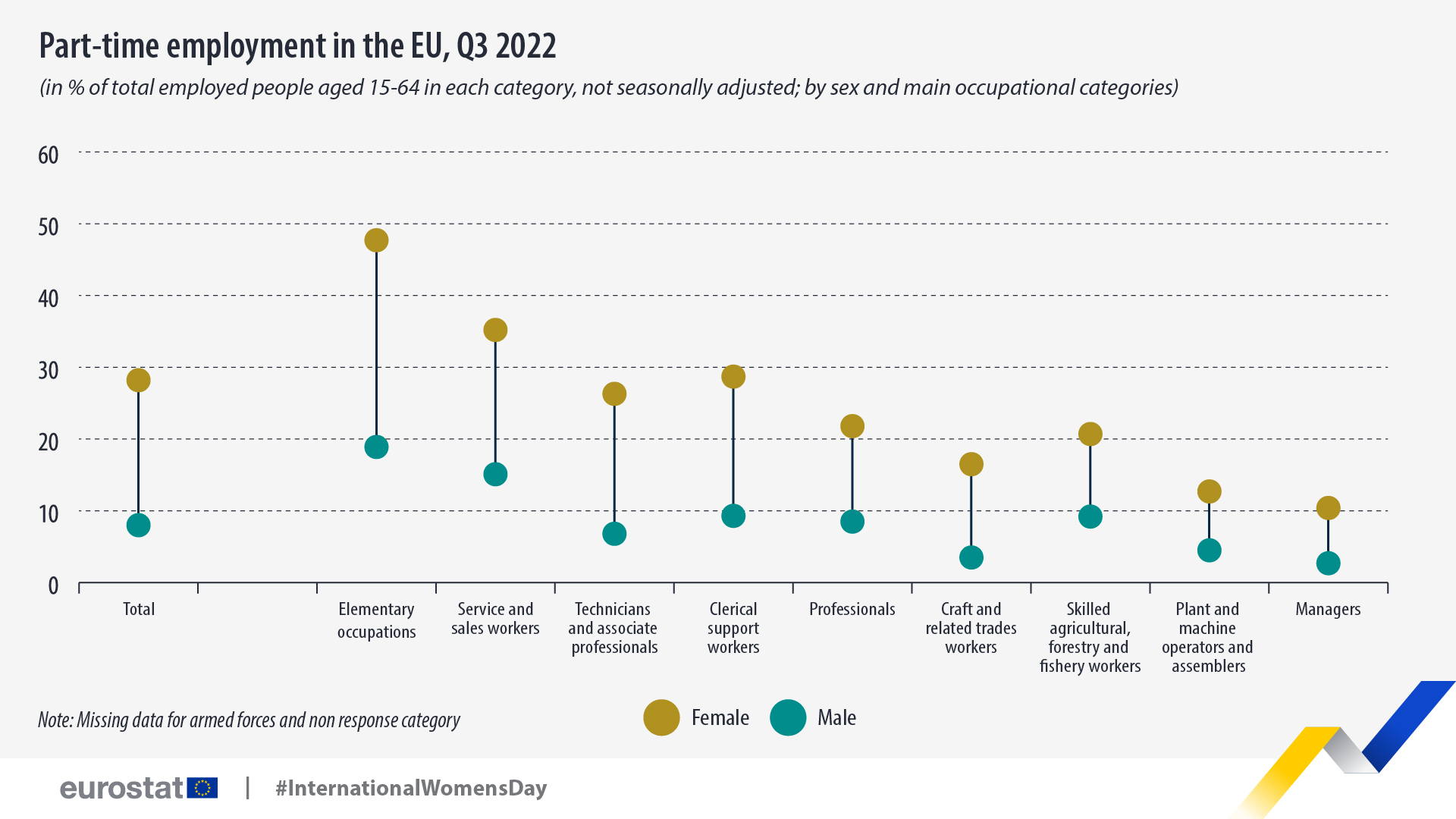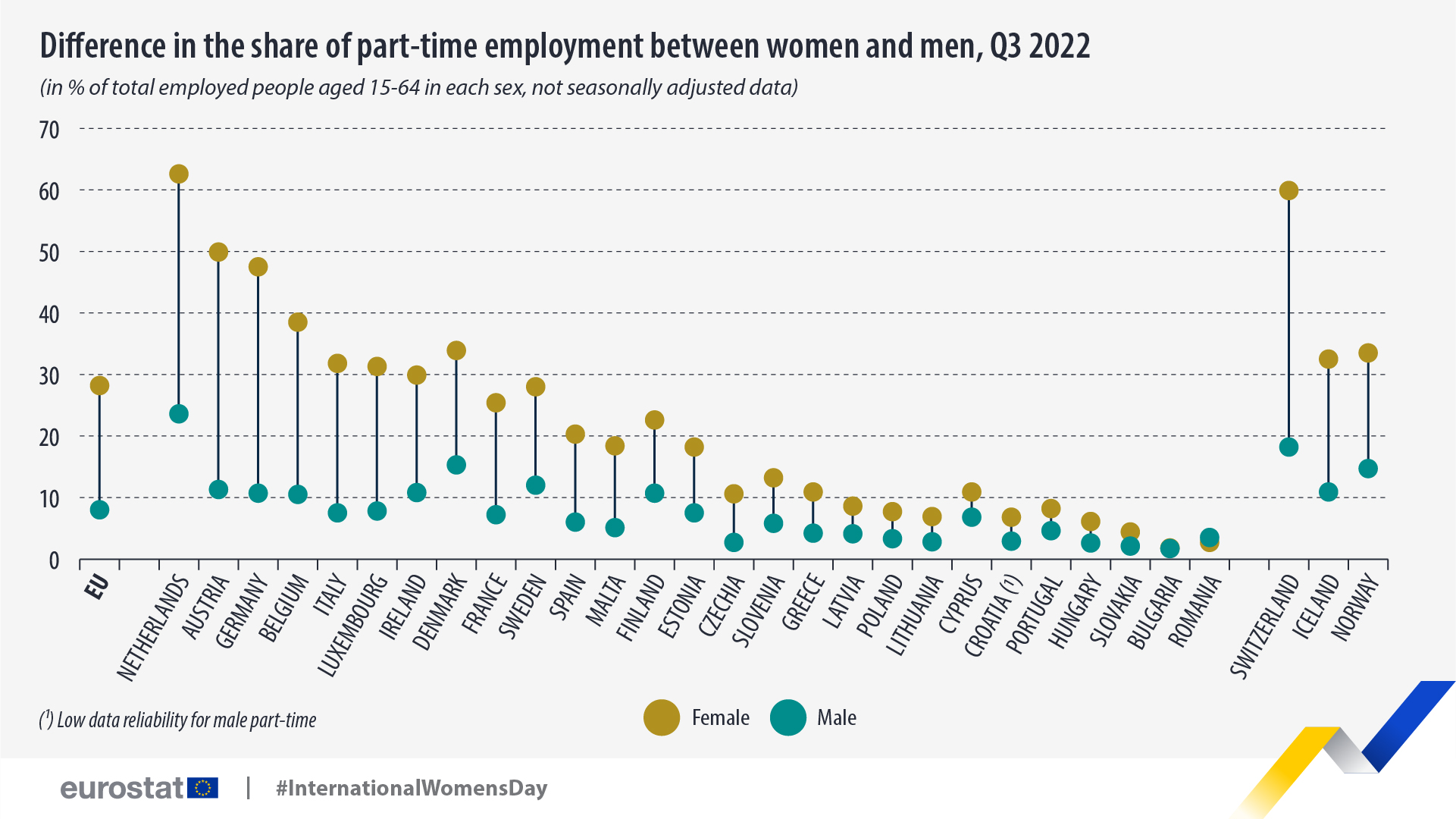Share of women working part-time higher than men

In the EU, data shows that the share of female part-time workers in total female-employed people aged 15-64, in the third quarter of 2022, was higher (28%) than the share of men (8%), with women representing the highest shares in all occupational categories (defined by ISCO).
In the third quarter of 2022, 48% of women in elementary occupations were part-time workers against 19% of employed men. This category referring to helpers, cleaners or food preparation assistants amongst others registered the largest difference between the shares of female and male part-time workers (29 percentage points (pp)). This main group of occupations was followed by service and sales workers (35% women vs 15% men) and technicians and associate professionals (26% vs 7%).
The lowest difference between the shares of part-time workers in the female and male employment were registered in the managerial occupations (10% women vs 3% men) and plant and machine operators (13% vs 5%) categories, with a 7 and 8 pp difference, respectively.
Source dataset: lfsq_epgais
At the country level, women recorded the higher share of part-time workers in total employed people aged 15-64 in all EU countries, except Romania where the share of men was higher: 4% for men against 3% for women. In Bulgaria, the shares of women and men part-time workers were very similar.
The Netherlands recorded the highest share of women working part-time, 63% of total employment against 24% for men, and the largest difference between women and men (39pp). The other EU countries that recorded the largest differences between women and men were Austria (39 pp) and Germany (37 pp).
Source dataset: lfsq_epgaed
For more information
- Statistics Explained article on employment characteristics of households
- Thematic section on employment and unemployment
- Database on employment and unemployment
- Statistics 4 Beginners on the labour market
- News article on Gender employment gap larger for parents in 2021
- News article on the webinar and Eurostat resources on gender
- Webinar on women in science, technology and research on Monday, 6 March
Methodological note:
- Part-time workers are employed persons not working full time. The distinction between full-time and part-time work is generally based on a spontaneous response by the respondent. The main exceptions are the Netherlands and Iceland where a 35 hours per week threshold is applied, Sweden where a threshold is applied to the self-employed, and Norway where persons working between 32 and 36 hours are asked whether this is a full- or part-time position.
If you have any queries, please visit our contact us page.


